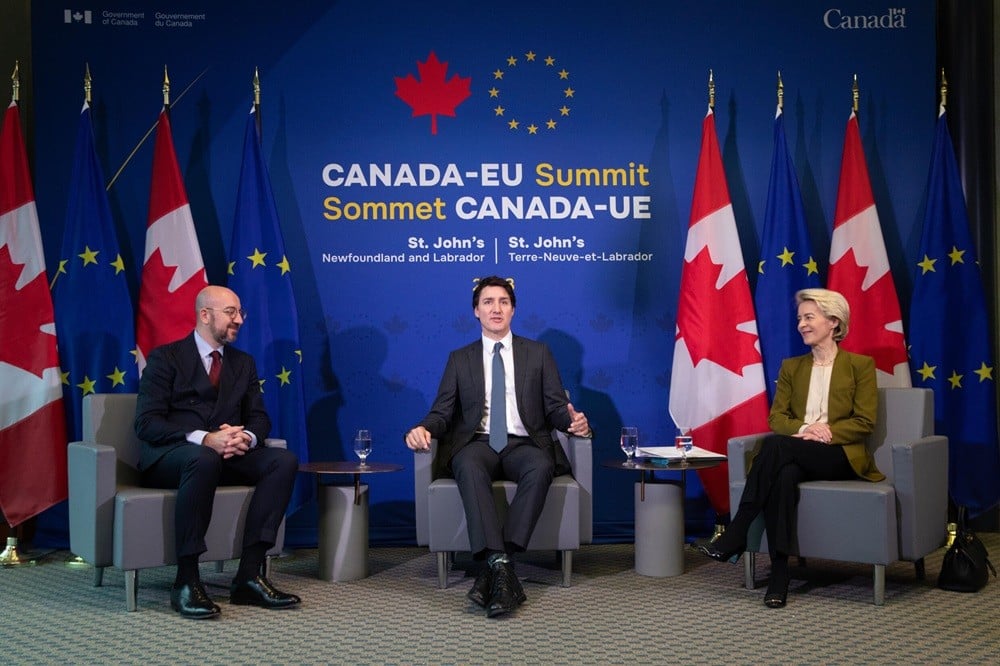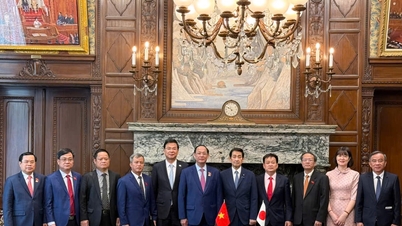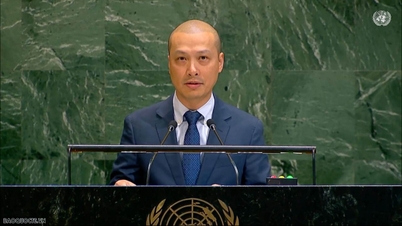As strategic partners, the European Union (EU) and Canada have much to discuss at the Summit, taking place on November 23-24 in Canada. However, raw materials are the issue of particular concern.
 |
| From left to right: European Council President Charles Michel, Canadian Prime Minister Justin Trudeau and European Commission President Ursula von der Leyen on November 24. (Source: AFP) |
In early November, the EU approved a provisional agreement on a law identifying 34 raw materials important to Europe, 17 of which are considered strategic.
However, the EU has long been dependent on external supplies, making raw materials an “Achilles heel”, reducing Europe’s competitiveness and strategic autonomy. This becomes even more urgent when China – the country that supplies up to 98.5% of rare earths to the EU – plans to restrict exports.
To ensure a stable supply chain, the EU Raw Materials Act identifies the need to find reliable partners. As the country with the longest formal relations with the EU among developed industrial countries, Canada is a natural choice.
The advantage here is first of all that the EU-Canada strategic partnership has a solid foundation based on two important agreements: the Comprehensive Economic and Trade Agreement (CETA) which governs economic relations and the Strategic Partnership Agreement (SPA) which defines the framework for political , foreign and security cooperation between the two sides.
In addition, Canada is the EU's leading trade and investment partner. In 2022, trade in goods and services between the two sides reached 147 billion USD. As of 2022, Canada's direct investment in the EU was worth 248.8 billion USD, accounting for 12.5% of Canada's total foreign direct investment (FDI) abroad.
Solving the raw materials problem will help the EU and Canada confidently move towards the goal set by Canadian Prime Minister Justin Trudeau of "growing the middle class, improving quality of life and building a clean economy on both sides of the Atlantic".
Source



![[Photo] Binh Trieu 1 Bridge has been completed, raised by 1.1m, and will open to traffic at the end of November.](https://vphoto.vietnam.vn/thumb/1200x675/vietnam/resource/IMAGE/2025/10/2/a6549e2a3b5848a1ba76a1ded6141fae)






































































































Comment (0)